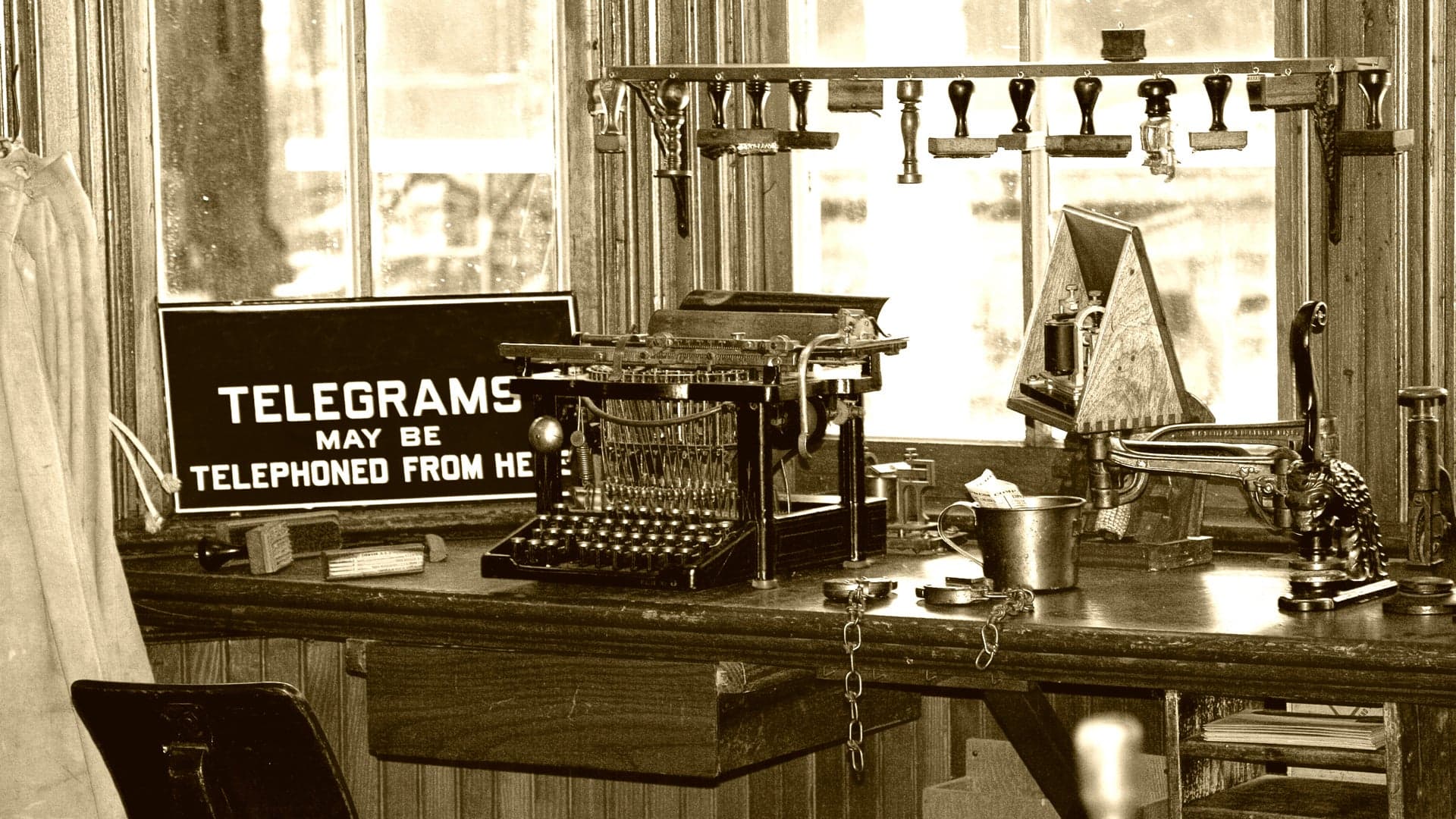On August 20, 1911, a dispatcher in the New York Times office sends the first telegram around the world via commercial service. Exactly 66 years later, the National Aeronautics and Space Administration (NASA) sends a different kind of message–a phonograph record containing information about Earth for extraterrestrial beings–shooting into space aboard the unmanned spacecraft Voyager II.
The Times decided to send its 1911 telegram in order to determine how fast a commercial message could be sent around the world by telegraph cable. The message, reading simply “This message sent around the world,” left the dispatch room on the 17th floor of the Times building in New York at 7 p.m. on August 20. After it traveled more than 28,000 miles, being relayed by 16 different operators, through San Francisco, the Philippines, Hong Kong, Saigon, Singapore, Bombay, Malta, Lisbon and the Azores–among other locations–the reply was received by the same operator 16.5 minutes later. It was the fastest time achieved by a commercial cablegram since the opening of the Pacific cable in 1900 by the Commercial Cable Company.
On August 20, 1977, a NASA rocket launched Voyager II, an unmanned 1,820-pound spacecraft, from Cape Canaveral, Florida. It was the first of two such craft to be launched that year on a “Grand Tour” of the outer planets, organized to coincide with a rare alignment of Jupiter, Saturn, Uranus and Neptune. Aboard Voyager II was a 12-inch copper phonograph record called “Sounds of Earth.” Intended as a kind of introductory time capsule, the record included greetings in 60 languages and scientific information about Earth and the human race, along with classical, jazz and rock ‘n’ roll music, nature sounds like thunder and surf, and recorded messages from President Jimmy Carter and other world leaders.
The brainchild of astronomer Carl Sagan, the record was sent with Voyager II and its twin craft, Voyager I–launched just two weeks later–in the faint hope that it might one day be discovered by extraterrestrial creatures. The record was sealed in an aluminum jacket that would keep it intact for 1 billion years, along with instructions on how to play the record, with a cartridge and needle provided.
More importantly, the two Voyager craft were designed to explore the outer solar system and send information and photographs of the distant planets to Earth. Over the next 12 years, the mission proved a smashing success. After both craft flew by Jupiter and Saturn, Voyager I went flying off towards the solar system’s edge while Voyager II visited Uranus and Neptune before sailing off to join its twin in the outer solar system.
Thanks to the Voyager program, NASA scientists gained a wealth of information about the outer planets, including close-up photographs of Saturn’s seven rings; evidence of active geysers and volcanoes exploding on some of the four planets’ 22 moons; winds of more than 1,500 mph on Neptune; and measurements of the magnetic fields on Uranus and Neptune. The two craft are expected to continue sending data until 2020, or until their plutonium-based power sources run out. After that, they will continue to sail on through the galaxy for millions of years to come, barring some unexpected collision.
READ MORE: Space Exploration: Timeline and Technologies

